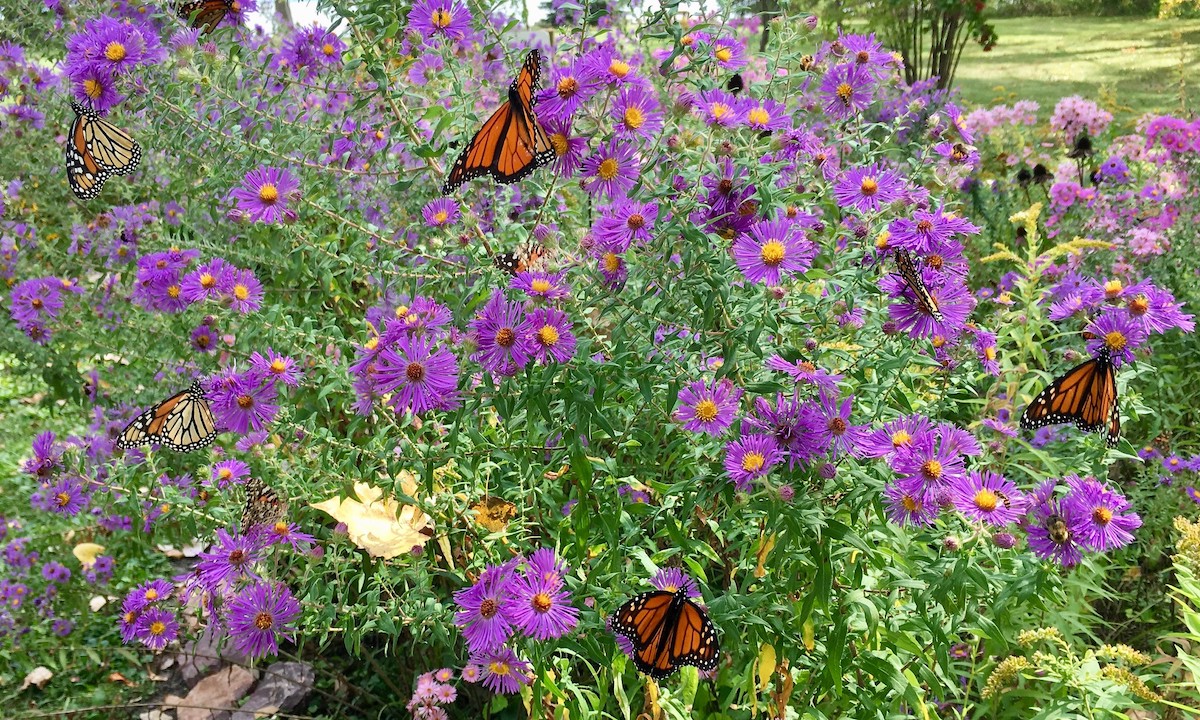Backyard Butterfly Garden Tips For Attracting Beautiful Butterflies

As awareness about the importance of preserving our environment grows, more and more people are looking for ways to contribute to the cause. One way that anyone can make a difference is by creating a pollinator garden. Not only does a pollinator garden provide a beautiful and vibrant addition to your landscape, but it also supports the conservation of pollinators such as bees, butterflies, and hummingbirds.
To get started with creating your very own pollinator garden, take a look at some of these tips and tricks:
How to Create a Pollinator Garden
1. Choose the Right Location: An ideal spot for a pollinator garden is a sunny area with well-draining soil.
2. Select the Right Plants: Choose native plants that provide food and habitat for pollinators such as milkweeds, coneflowers, and bee balm.
3. Provide Water: A shallow birdbath or a small pond can provide a source of water for pollinators to drink from.
4. Avoid Pesticides: Pesticides are harmful to pollinators, so avoid using them in your garden.
5. Consider Planting in Clusters: Clusters of plants will provide more food and shelter for pollinators than a single plant.
6. Plant at the Right Time of Year: Plant in the spring or fall to give plants time to establish themselves before harsh weather arrives.
7. Regularly Weed and Mulch: Keep weeds under control and use a layer of mulch to help retain moisture in the soil.
8. Enjoy the Fruits of Your Labor: Watch as your pollinator garden comes to life with colorful blooms and the flutter of wings.
Tips & Tricks for Maintaining Your Pollinator Garden
1. Deadhead Flowers: Removing spent flowers will encourage new growth and help prolong the blooming season.
2. Keep Soil Moist: Regular watering, especially during dry spells, will help keep plants healthy and blooming.
3. Prune Wisely: Pruning helps keep plants healthy and encourages new growth, but it's important to prune at the right time to avoid harming pollinators.
4. Monitor for Pests: Keep an eye out for pests such as aphids or spider mites and take action if needed.
5. Add Compost: Adding compost to your garden will help improve soil quality and provide nutrients for your plants.
Frequently Asked Questions
Q: What are the benefits of a pollinator garden?
A: Pollinator gardens provide food and shelter for pollinators such as bees and butterflies. They also help support local ecosystems and can improve the health and diversity of your landscape.
Q: What types of plants are best for a pollinator garden?
A: Native plants that provide nectar or pollen are ideal for a pollinator garden. Some examples include milkweeds, coneflowers, and bee balm.
Q: How can I attract hummingbirds to my pollinator garden?
A: Hummingbirds are attracted to brightly colored flowers that provide nectar. Some examples include red cardinal flowers, bee balm, and tubular-shaped flowers such as petunias and fuchsia.
Q: How can I avoid harming pollinators when maintaining my garden?
A: Avoid using pesticides or chemicals in your garden. Instead, use natural methods for controlling pests and weeds. Prune at the right time to avoid disrupting pollinators, and provide water sources for them to drink from.
Creating a pollinator garden is a fun and rewarding way to contribute to the preservation of our environment. With a little bit of planning and maintenance, your garden can provide a beautiful and vibrant habitat for pollinators for years to come.


Post a Comment for "Backyard Butterfly Garden Tips For Attracting Beautiful Butterflies"